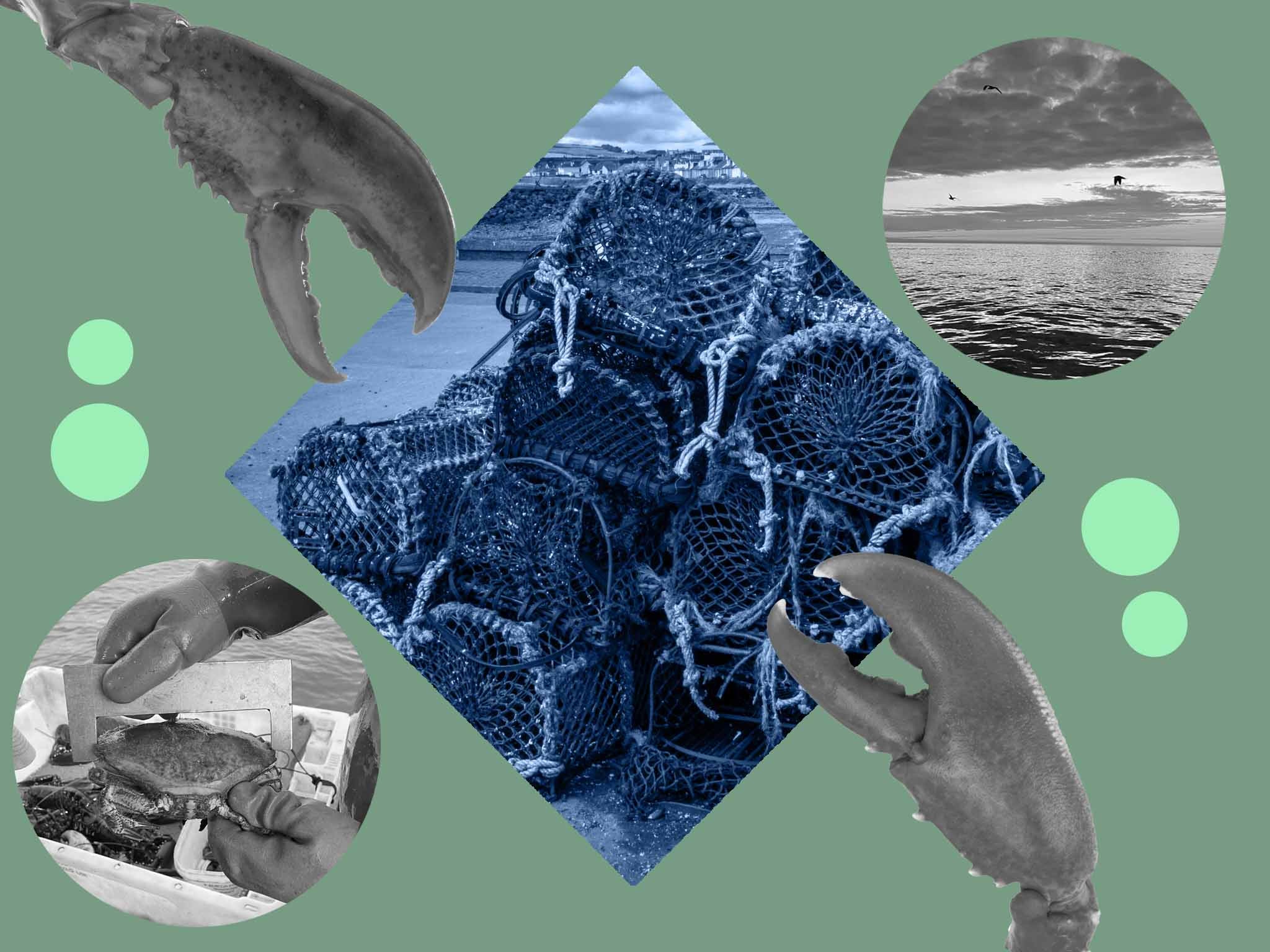Toxin may have caused sealife disaster off UK coast, scientists find
The research contradicts government findings that an algal bloom caused mass marine deaths near Tees estuary

The government faces fresh questions over an ecological disaster on England’s North East coast after scientists revealed sea life may have been killed by a manmade toxin.
The chemical pyridine, used in industrial processes, could be the cause of mass die-offs of crabs and lobsters since October last year, a team of scientists from Durham, Newcastle, Hull, and York have determined, according to a draft report seen by The Independent.
The findings contradict a joint agency report led by the Department for Food, Agriculture and Rural Affairs (Defra), which found the toxin was not present in waters where sealife had washed up dead from the Tees estuary down the coast to Whitby and Scarborough. Instead, the report said an algal bloom was likely to be the cause of the deaths, despite finding concentrations of pyridine in samples of dead crabs.
Dr Gary Caldwell, a scientist at Newcastle University, said in a statement: “Our findings demonstrate that Defra’s position is now untenable.”
Joe Redfern, a marine biologist and fisherman added: “The results from the investigations should change the way we think about not only the recent mass mortality events that have impacted our coastline but also the way we think about dredging and marine pollution all over the world.”
The fresh evidence follows an Independent investigation revealing claims from officials that they had been subjected to political pressure to push forward the algal bloom hypothesis when, in their view, further investigation was required.
One official, speaking on condition of anonymity said in July: “We were not confident that the algal bloom was the absolute cause in the manner it has been presented by politicians.”
A second said: “There was clear political pressure brought on us to just find an answer and then the least politically sensitive hypothesis was given most prominence.”
Activists and the fishing community had raised concerns that pyridine left by historical heavy industry on the Tees could have been disturbed by dredging – lifting sediment from the seabed to deepen channels for vessels or building work – associated with the management of Teesport, run by PD Ports and ultimately backed by a financial firm with £613bn (£680bn) in assets under management. PD Ports has said it does not believe dredging is to blame.
The activists also flagged other sensitivities with the future development of a Brexit freeport planned for the area which would require further extensive dredging.
The independent team of scientists is due to present their full findings to the government and related agencies on Thursday.
Scientists at Newcastle University found that pyridine was present in sea bed sediment at levels and depths which means it could be easily disturbed by dredging activity. The researchers found crabs would spasm and then become paralysed after being exposed to pyridine. They then died in the same postures as those documented among crabs washed ashore.
The chemical is known to be toxic to sea life and is also harmful to humans. Fishermen and sea-bathers have independently reported itchy eyes and skin inflammation after close contact with waters and dead crustaceans in the affected areas.
These experiences tally with hazards associated with pyridine, according to the American Chemical Society.
The draft report states: “The results support the suggestion that pyridine and dredging could have played a major part in the observed mass mortality events.”
Scientists also used computer modelling of conditions, dredging activity, and sea currents around the time of die-off events to see if the disturbed toxin could have been carried to areas of the coast where crabs and lobsters were found dead or dying.
This analysis used lower levels of pyridine than those indicated by samples and other laboratory testing to offer a deliberately conservative assessment of its potential impact.
It showed as much as 50 per cent of the crab population could have been wiped out in Redcar and 30 and 10 per cent in nearby areas in this manner.
PD Ports have been contacted for comment.
A spokesperson for Defra said: “A comprehensive investigation last year included extensive testing for chemicals and other pollutants such as pyridine. It concluded a naturally occurring algal bloom was the most likely cause.
“We recognise the concerns in regards to dredging, but we found no evidence to suggest this was a likely cause. There have been no materials licensed for disposal at sea in the area which would fail to meet international standards.”
They added: “We welcome research carried out by universities and will continue to work with them, including studying this report carefully.”




Join our commenting forum
Join thought-provoking conversations, follow other Independent readers and see their replies
Comments